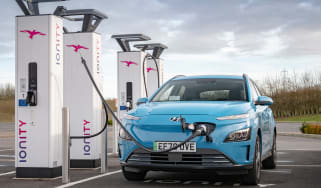Volkswagen ID. Buzz review – retro surfer bus reinvented as an EV
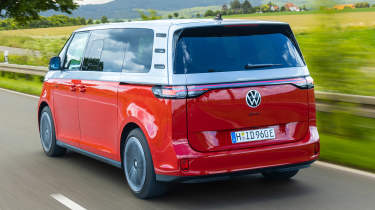
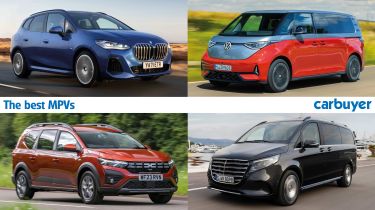
A Multi-Purpose Vehicle (MPV) was once the default family car for buyers who needed space above anything else. Tall and boxy exterior looks translated into vast cabins and cavernous boots that could swallow everything from your holiday luggage to your four-legged friends.
Today, things aren’t quite the same. Buyers have shifted towards trendy SUVs with their rugged looks and raised ride heights, meaning there are fewer MPVs to choose from than before. But the MPVs that remain on sale today are some of the best there have ever been, so they’re still a worthwhile choice for the family car buyer who cares more for space than style.
 The best 7-seater cars to buy in 2025
The best 7-seater cars to buy in 2025
Then again, some MPVs are rewriting the rule book, arriving with funky styling to turn heads in the school car park. There are even a handful of electric options available, too, which will be perfect for those living in urban areas or families wanting to cut their fuel bills. Of course, MVs are still offered in a range of sizes, from roomy five-seaters up to van-based models with nine seats.
The key benefit to picking an MPV over an SUV is versatility. Most come with flexible seating arrangements, allowing you to remove seats that you don’t use to maximise cargo space. The seats can often slide and fold, allowing you to use the interior space how you want. Sure, you won’t have the same all-terrain capabilities as some SUVs, but we doubt many buyers will be taking their shiny new family car off-road anyway.
Practical, spacious and well-equipped, these are the best MPVs you can buy right now. You can also scroll down to the bottom of our list to read about the history of people carriers in the UK.
The electric ID. Buzz steps in where the classic VW Type 2 Microbus left off, with funky retro styling and space for the family, the dog, and all your luggage. As standard, you get sliding doors for easy access, a reversing camera, and creature comforts like a heated steering wheel and a 10-inch infotainment screen.
The ID. Buzz also has some impressive eco-friendly credentials beyond just the electric powertrain. The seat upholstery is made from 90% recycled plastic bottles, including 10% waste plastic collected from the ocean. It’s also apparently delivered with a carbon-neutral footprint from its factory in Hannover, Germany with materials of non-animal origin.
A 280-mile range and charging times as low as 30 minutes from 5-80% should mean the ID. Buzz is versatile enough for most families. All this does come at a price though: the cheapest model starts from around £59,000.
The even more family-friendly ID. Buzz LWB version arrived in 2024, costing hardly any more than the five-seater, so we think it’s the one to have. With a 250mm increase in length, there’s a third row of seats, and the option to buy either a six or seven-seat layout. A bigger 82kWh and more powerful motor will also boost its driving range and performance.
| Pros | Cons |
|
|
Find new and used deals for the Volkswagen ID. Buzz on our sister site Auto Express
While MPVs tend to be rather expensive due to their large size, the seven-seat Dacia Jogger breaks this trend with a starting price of just over £18,000. It’s the brand’s largest model, which shares several parts and engines with the latest Renault Clio. While entry-level trims are sparsely equipped, stepping up to the Extreme trim adds luxuries like heated seats, a reversing camera and a touchscreen infotainment system with sat-nav.
Unlike some rivals, the Jogger’s third row is large enough to accommodate two adults, and it boasts 213 litres of boot space with all seven seats in place, increasing to 699 litres with five seats, and a vast 2,085 litres with both rear rows of seats removed. However, it’s worth noting there are only two ISOFIX points across the middle row.
Dacia has tuned the Jogger’s suspension strictly for comfort, and it deals very well with rough road surfaces, but the car’s tall stance does mean there is a fair amount of body lean in the corners. Power comes from a turbocharged 1.0-litre petrol engine producing 108bhp, which provides nippy performance, managing 0-62mph in just over 11 seconds. Officially, this engine can return up to 49.6mpg, meaning the Jogger won’t cost the earth to run.
Alternatively, there’s a full-hybrid Jogger available, too. This gets the same E-Tech system found in many modern Renaults, and it works to great effect. It's quick and economical, returning around 10mpg more than the pure-petrol model. It’s around £3,000 more expensive, though, so you’ll need to weigh up whether the fuel savings are worth it for you.
| Pros | Cons |
|
|
Find new and used deals for the Dacia Jogger on our sister site Auto Express
The Ford Tourneo Connect is hardly the most stylish MPV on the planet, but we can’t fault it for practicality. It sits somewhere between the Dacia Jogger and Volkswagen Multivan in size, offering space for up to seven passengers and a giant boot within its van-like body. Opt for the Grand Tourneo and you get even more space in the back and a wider sliding door – both worthwhile if you plan on using the third row of seats regularly.
The key to the Tourneo Connect’s practicality is that it’s based on a van. The boxy shape creates masses of headroom and legroom inside – more than you’ll find in a seven-seater SUV. The sliding doors also make getting in and out of the Tourneo Connect easy when parked in a tight space. You can remove all the rear seats if you want, which essentially converts the Tourneo Connect back into a van, giving you more cargo space than you’ll find in any SUV by a longshot.
Despite its van origins, the Tourneo Connect drives well and is comfortable and quiet on the move. It feels stable through the corners despite its height, and the engines are both powerful enough and reasonably efficient. There are petrol, diesel and plug-in hybrid versions available, so Ford has pretty much every base covered, bar an electric version.
| Pros | Cons |
|
|
Find new and used deals for the Ford Tourneo Connect on our sister site Auto Express
You’d be forgiven for thinking that the Volkswagen Multivan is electric, given its futuristic-looking and smooth front end. Company car buyers or business users have the option of a plug-in hybrid with low BiK (Benefit in Kind) but also a great overall range for tackling a full day of driving when needed. Private buyers looking for decent fuel economy may be best served by the recently introduced diesel engine, as the eHybrid is a good chunk more expensive than the rest of the engine lineup.
The Multivan replaced the Volkswagen Caravelle, and its base-spec Life version has everything a family could need. It includes alloy wheels and USB chargers, while the more expensive Style trim adds more equipment, including a panoramic sunroof, LED matrix headlights, electrically sliding doors and a premium sound system.
As you’d expect, the Multivan is brilliantly practical, with up to 4,000 litres of luggage space and flexible seating and tables. It’s why you’d choose something like this over a similarly priced seven-seat SUV such as the Kia Sorento, but it will be expensive for many buyers, and those after bolder styling may be attracted to the electric Volkswagen ID. Buzz instead.
| Pros | Cons |
|
|
Find new and used deals for the Volkswagen Multivan on our sister site Auto Express
If none of the MPVs above are big enough for your needs, then the Ford Tourneo Custom will be your best bet this side of a double-decker bus. Based on the Transit Custom, the Tourneo version takes the humble commercial van and transforms it into one of the best large people-carriers around. You get all the space you’d expect from a van-based MPV, but with a driving experience that feels much closer to that of a regular car – the perfect combination.
There’s space for up to nine passengers in the Tourneo Custom depending on which configuration you pick, including three seats in the front row. They’re a bit cramped when all three are occupied, but the rest of the cabin is top-notch. With lots of standard equipment, good noise insulation and an impressive infotainment system, it doesn’t feel like you’re sitting in a work van up front. Even the second and third rows feel high quality, especially with the optional panoramic sunroof and electrically-sliding doors.
There’s a traditional diesel engine available in the Tourneo Custom, which feels refined and powerful enough, although the optional automatic gearbox isn’t as quick as we’d hoped. Spend a bit more and you can have a plug-in hybrid or even an electric version; the latter manages up to 202 miles of range.
| Pros | Cons |
|
|
Find new and used Ford deals on our sister site Auto Express
The Volkswagen Caddy is a lot like the Ford Tourneo Connect in the sense that it’s based on a commercial van, and seats up to seven people while boasting an enormous boot. There’s a good reason for that – they’re essentially the same car underneath. You’ll notice that they look very similar inside and out, but there are a few differences worth pointing out.
Firstly, the Volkswagen is the cheaper of the two. That could make all the difference for family buyers looking for maximum space for minimum cost – and the Caddy certainly has space. It’s available in two lengths, with the larger option giving third-row passengers more space and creating more boot room. Secondly, the Caddy isn’t available as a plug-in hybrid, so if this is a deal-breaker, you’ll have to go for the Ford.
| Pros | Cons |
|
|
Find new and used Volkswagen deals on our sister site Auto Express
The BMW 2 Series Active Tourer is one of the few premium-badged MPVs on the market. While it doesn’t offer the same sporty driving experience as the brand’s other models, it is more engaging to drive than a lot of other MPVs. The latest model features a more striking exterior design complete with BMW’s enlarged kidney grilles, giving it a more modern and premium look. There’s a pair of petrol engines available, both of which can return over 46mpg, alongside a flagship pair of plug-in hybrid models.
With the latter fitted, the 2 Series Active Tourer is one of the most economical cars on sale, thanks to an astonishing claimed 314mpg economy figure and low emissions sure to appeal to company car choosers. This is possible thanks to an electric range of over 50 miles, which should be enough to cover off the daily driving of most owners.
On the inside, BMW has given the latest 2 Series Active Tourer a thoroughly updated interior with plenty of high-quality materials and cutting-edge tech. Prices start from nearly £35,000, and every model gets a long list of standard equipment including LED headlights, dual-zone climate control, a reversing camera, a 10.25-inch digital instrument cluster and a larger 10.7-inch infotainment touchscreen. Practicality is also decent enough for a five-seat MPV, with plenty of rear passenger space and 406 litres of boot space.
| Pros | Cons |
|
|
Find new and used deals for the BMW 2 Series Active Tourer on our sister site Auto Express
If you need a vehicle that can carry lots of people and still has storage room then the e-Spacetourer from Citroen – or the mechanically identical Peugeot e-Traveller or Vauxhall Vivaro-e Life – are well worth a look. These vehicles can carry up to nine people and are available in extra-long ‘XL’ bodystyles for those in need of even more space. Headroom and shoulder room are excellent so even taller passengers should be able to get comfortable.
Although the e-Spacetourer is based on a van, the driving experience is similar to a larger car, partly thanks to the suspension being reworked for the passenger variant. The robustness of the van remains, though, and the e-Spacetourer feels like it will wear well even with the rigours of family use.
Despite its big size, the MPV’s height of 1.9 metres means it can fit in the same car parks as big SUVs, while sliding side doors should make it easier for rear occupants to get in and out. There are neat touches like an opening tailgate window too, so you can throw in smaller items without having to open the large hatchback. A split panoramic sunroof also brightens the interior for passengers.
| Pros | Cons |
|
|
Find new and used deals for the Citroen e-SpaceTourer on our sister site Auto Express
Citroen has long been a front-running competitor in the MPV market, particularly appealing to families looking for a relatively affordable solution. The latest Berlingo took a leap towards the future; previously offered only with a fully electric powertrain and a range of up to 174 miles, in early 2023 Citroen announced that petrol and diesel engines would return. This broadened its appeal for buyers of all budgets and requirements, including those who need to tow a trailer or caravan. Both 1.2-litre petrol and 1.5-litre diesels are available, with power outputs up to 128bhp and fuel economy in the ballpark of 50mpg.
Its designers have worked to further separate the feel of the Berlingo from the van on which it is based, both with a stylish reworking of the exterior and upgrades to the interior to make it feel much more modern. It received a thorough update in 2024, too, bringing new styling and some interior changes.
With the e-Berlingo, Citroen also kept comfort near the top of the priority list. That means a hushed ride for passengers and controllable and predictive handling for the driver, while the electric motor emits just a faint whine under acceleration. Competitive 100kW rapid charging can replenish the battery from 10-80% in half an hour for those longer drives.
Closely-related models also include the rebadged Peugeot Rifter, Vauxhall Combo Life and the Toyota Proace City Verso, though at the time of writing the Citroen is the cheapest. It’s worth weighing up each model to decide which is best, though – for example the Toyota Proace City Verso is offered with a 10-year warranty while its siblings are not, and many are now electric only.
| Pros | Cons |
|
|
Find new and used deals for the Citroen Berlingo on our sister site Auto Express
Going for an MPV doesn’t mean you have to skimp on luxury, as proved by the latest Mercedes V-Class. It’s the priciest option on this list, and you can tell from the moment you step inside. This isn’t a basic family hauler, but instead, a premium private jet on wheels designed to ferry VIPs. That said, it still gets all the MPV essentials right, with an enormous boot, space for up to eight and a configurable interior.
Up front, the interior of the V-Class feels a world away from the Vito van on which it's based. You get a wide, digital dashboard, plenty of premium materials and snazzy ambient lighting. The lack of electrically-adjustable seats in such a pricey vehicle seems like a bit of an oversight, but the standard equipment is otherwise impressive. Behind the wheel, the V-Class feels good to drive for a vehicle of this size, and the ride is at its best with some passengers in the back.
And that’s where you'll want to be spending your time in the V-Class. The seats themselves are comfy and supportive, while there’s masses of legroom and headroom as you’d expect. There are multiple charging points, cupholders, as well as picnic tables, so VIPs will be well catered for in the back.
| Pros | Cons |
|
|
Find new and used deals for the Mercedes V-Class on our sister site Auto Express
In the mid-1980s, when many people opted for a saloon or estate car, a brand new option made its debut. Though uptake was initially slow, people soon realised that the space and practicality offered by MPVs (Multi-Purpose Vehicles) and 7-seater people carriers made them perfect for families. As a result, slowly but surely, cars like the Renault Espace soon became commonplace.
The advantages for passengers were clear to see: a raised roofline, higher seating, huge windows and plenty of interior space meant large amounts of comfort and practicality. Getting in and out was easy and there was a light and airy atmosphere inside. The open space made it easier for parents to keep an eye on children in the back, while the extra all-around space meant plenty of room for all the luggage a family could need.
MPV sales picked up pace in the 1990s as more and more mainstream manufacturers launched their cars into the UK market, including the Ford Galaxy and Vauxhall Zafira. The latter was hugely influential, creating the blueprint for compact seven-seat people carriers with clever seating arrangements. Its ‘Flex7’ seating allowed the third row to fold neatly into the boot floor when not needed – a selling point that saved space and is now shared with a multitude of MPVs and SUVs.
The Vauxhall Zafira lacked the style of modern MPVs like the Renault Scenic, but it pioneered many of the design features of the best people carriers available today. It shared its chassis and engines with the Vauxhall Astra, so it drove like a smaller vehicle and had similar performance and running costs to a hatchback.
Below you’ll find a list of our 10 best MPVs on sale, with their starting price and Carbuyer score.
| Best MPV ranking | Make and model | Priced from | Carbuyer rating (out of 5) |
| 1 | Volkswagen ID. Buzz | £59,000 | 4.1 |
| 2 | Dacia Jogger | £18,000 | 4 |
| 3 | Ford Tourneo Connect | £34,000 | 4 |
| 4 | Volkswagen Multivan | £48,000 | 4 |
| 5 | Ford Tourneo Custom | £57,000 | 4.1 |
| 6 | Volkswagen Caddy | £28,000 | 4 |
| 7 | BMW 2 Series Active Tourer | £35,000 | 3.9 |
| 8 | Citroen e-SpaceTourer | £38,000 | 3.8 |
| 9 | Citroen Berlingo | £23,000 | 3.7 |
| 10 | Mercedes V-Class | £74,000 | 3.8 |
Looking for a bargain? Take a look at our guide to the best used 7-seat cars...
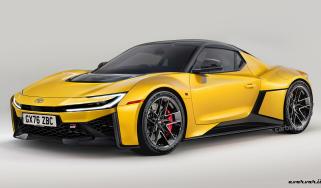
New Toyota MR2 sports car on the way – and it’s not electric!
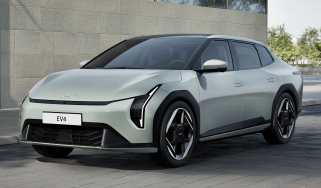
All-new Kia EV4 lands with space-age looks to take on the VW ID.3
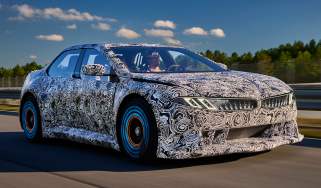
New BMW M3 super-saloon goes electric – we ride in a prototype

